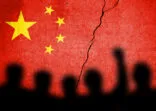Industry sources pointed to several sectors that they believe offer opportunities. UBS CIO Wealth Management believes equities, particularly companies in the tourism sector are “a strong bet in the months to come”.
It added that an expanded ETF-purchasing program by the Bank of Japan is a catalyst that could drive a rebound in Japan’s equity markets.
Standard Life Investments (SLI) acknowledged that while volatility in the commodity markets have affected Japanese oil refiners and trading companies, there are those who have used this opportunity to employ reform in the business structure. The fund house said that Mitsui Chemical is one such example.
Shigeru Oshita, SLI’s investment director of Japanese equities, noted: “Mitsui Chemical is reducing its price-sensitive basic materials business by closing domestic petrochemicals plants, while focusing more on strategic growth products such as functional polymers, food packaging and medical components. Our view is that these reforms should lead to more stable long-term growth.”
Another area that SLI likes is the food processing segment. It named Ajinomoto as a local brand with growth prospects in the international market.
“Less than five years ago, more than 20% of profits came from its bulk business (animal nutrition, Umami seasoning for processed food manufacturers, and sweeteners), which are vulnerable to price volatility.
“However, management has ambitions to be a top-ten global food manufacturer and is aggressively expanding overseas. The growing middle classes in Thailand, Vietnam, Indonesia, Philippines and Brazil are strategic sales targets for its flagship seasoning products and new condiments suited to local palates. As its retail food business has expanded, its price-sensitive bulk business has shrunk to around 10% of profits, and these reforms should be positive for Ajinomoto,” Oshita added.
TPP and Japan
A wild card for Japan’s economy is the successful implementation of the extensive Trans Pacific Partnership, a preferential trade agreement that includes the US and twelve Asia-Pacific countries but excludes China.
TPP negotiations concluded last week, marking a major milestone for the trade pact.
The TPP is not just about reducing tariffs but it aims to lower trade barriers to goods and services with more than 18,000 tarriff cuts, and set common standards for trade, investment and labor.
According to SLI, “The benefits of the TPP will vary significantly across signatories. The Japanese government expects considerable gains in exports, imports and investments as a result of the trade agreement. However, the full benefits will feed through slowly and rely on deregulatory initiatives at home.”
















